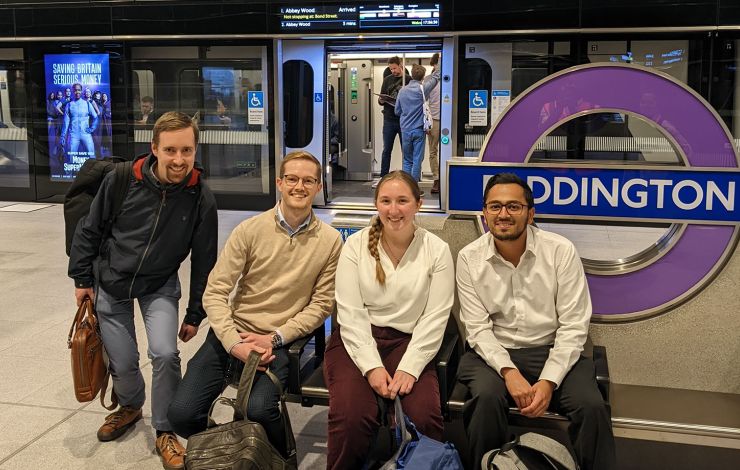As Crossrail completes its first week of passenger service, with more than a million passengers enjoying this high-quality new line, it's a good opportunity to reflect on the work that led to this milestone.
Many have contributed to this project, not least the 10,000 workers employed in the construction, and Steer is proud to be one of those contributors to this once-in-a-generation change for London.
The Concept
The idea of a new east-west underground line linking East and West London was first suggested in the Abercrombie Report in 1943. Various ideas were developed for Crossrail type schemes throughout the 1970s/80s, encouraged by the success of the two RER lines in Paris. The DfT/TfL Central London Rail Study in the late 80s considered four options: East-South Crossrail, North-South Crossrail and the Chelsea-Hackney Underground line (now Crossrail 2). It recommended East-West Crossrail linking Liverpool Street and Paddington with just one branch in East London (to Stratford and Shenfield) and two branches west of Paddington was then taken forward for approval by a Parliamentary Committee in the early 1990s.
The Parliamentary Committee disapproved of Crossrail and did not disclose their reasons, but one of the main objections was from Tower Hamlets. They were concerned about the proposal to end the tunnel just east of Liverpool Street and then improved the existing surface tracks to Stratford. Tower Hamlets wanted the tunnel to go all the way to Stratford, avoiding disruption in the Borough and would also have liked a Crossrail station in the Borough.
TfL started to promote Crossrail again in the early 2000s, with a tunnel to Stratford. However, East London was now changing rapidly, with over 100,000 jobs forecast for Canary Wharf. As a result, several other Crossrail options, supported by Canary Wharf and their transport advisors (Steer), were developed to serve Canary Wharf, Stratford and Shenfield.
The selected option, which has been under construction for the last thirteen years and is now called the Elizabeth Line, has two branches in East London. When fully functioning from 2023, all the trains on both branches will pass through a new station at Whitechapel - in Tower Hamlets, meaning their ambition of the 1990s will have been at least partially achieved.
The Station
Canary Wharf station is an excellent example of how over-station development can help deliver and cross-fund critical transport infrastructure. Steer helped Canary Wharf Group achieve the necessary planning consent by preparing the full suite of transport documents to support the successful planning application for the over station development.
We also worked closely with Canary Wharf over the station's planning and design, carrying out pedestrian modelling to refine the station design and designing the enabling highway works.
Our contribution has continued with Steer also assisting the achievement of the planning consents for the adjacent North Quay development. Upon implementation, this development will provide a high-quality pedestrian link between Canary Wharf Elizabeth Line station and Poplar DLR station, aiding interchange and further enhancing the reach of the Elizabeth Line into the surrounding area.
The Operation
Steer made a material contribution in specifying and supporting the procurement of the operator of the Elizabeth Line. In addition, we were engaged at an early stage by TfL to undertake detailed modelling of operating costs and operational performance to help inform the scope and objectives of the Crossrail Operating Concession – ultimately awarded to MTR Corporation in 2014.
This new concession would initially take over running the services between Shenfield and Liverpool Street and between Reading and Paddington and then manage the subsequent transformation of services transitioning through the complex staged programme of delivering the Crossrail Project through to the full-service operation of the completed Elizabeth Line.
TfL appointed Steer as their technical advisor to support the procurement of the Crossrail Operating Concession. Our expert team supported all stages of the procurement, from prequalifying bidders, specification of the contract requirements, and tender evaluation process to evaluation of tenders and contract award.


